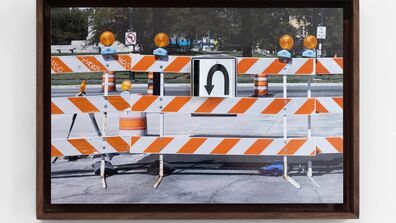
About a Work
In the museum with Drea Howenstein
Tadao Ando Room
by Zoya Brumberg (MA 2015)

It is difficult to come by a moment of reprieve in a world where we can reach or be reached by anyone at the touch of a button. Yet here in the Ando Room, the first United States commissioned gallery designed by Osaka-born architect Tadao Ando in 1992, the rhythms of modern daily life are rendered still. The dark, minimalist environment evokes the architecture of a traditional Japanese interior. Sixteen pillars suggest a forest through which visitors gaze at Japanese screens, ceramics, and other art objects in varying states of aging and decay.
For SAIC Professor of Art Education Drea Howenstein, Ando’s room “offers a timely, transcendent reprieve from our 24/7 world. It requires us to leave our cell phone in our pocket, and sit and be quiet for five minutes.” For many students, this is an unusual request from a work of art. The subdued lighting directs viewers “to a changing world of material culture. Our eyes dilate, changing the way we see. Our pulse slows a bit; we sit on benches that encourage us to sit erect, and we hear the unique quiet acoustics,” she says.
Howenstein initially began her art career as a sculptor and ceramicist, but severe metal poisoning forced her to reevaluate and transform her artmaking practice. She moved her work toward ephemeral social projects to inspire critical dialogues. Howenstein brings this activist sensibility to her role as an art educator. She teaches sustainable design and community-engaged projects, inspiring her students to engage with the “ideology underlying the design of space.” In other words, art that may seem apolitical on the surface becomes political through its context in a human, social environment.
When Howenstein brings her students to the Ando Room, they must place their daily lives aside to encounter an unfamiliar space. The carefully curated range of cultural artifacts, “fragile and vulnerable to deterioration,” present the social, aesthetic, and political contradictions of Japanese culture. Students situate themselves in another world, one that calls a dominant imperial perspective and approach to history into question.
